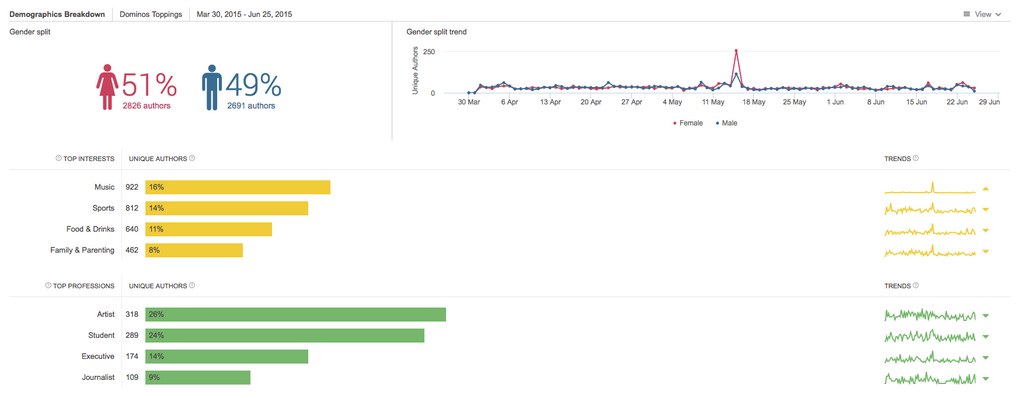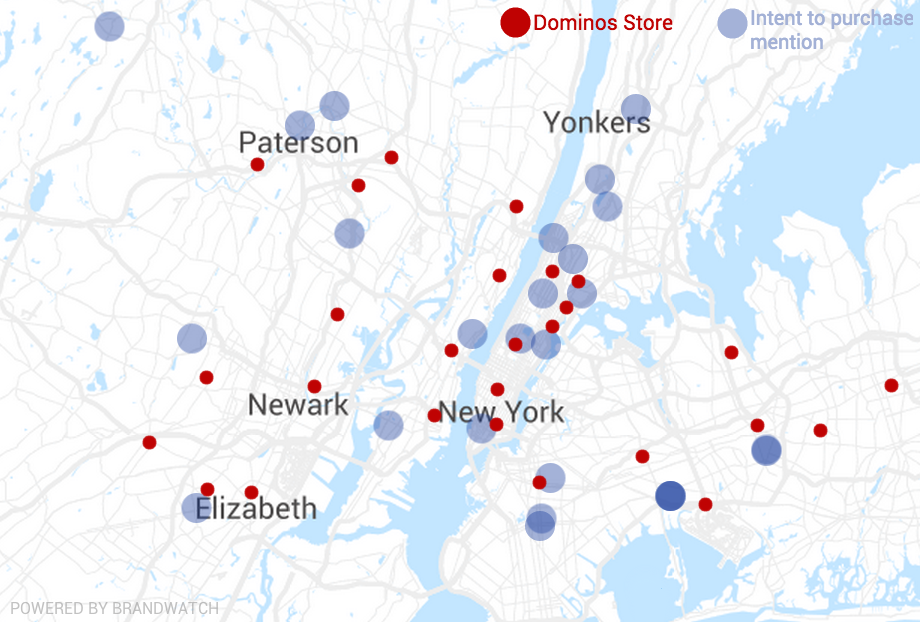20 Social Media Holidays to Celebrate This May
By Yasmin PierreApr 10
Read the practical framework for leveling up your social media team.
Published September 12th 2016
Traditionally, brands had no choice to market to everyone at once. Whether a TV spot or a newspaper print ad, mass marketing meant many people who saw an advert were outside of the target audience, unlikely to ever buy the product no matter how good the advert was.
With the rise of the internet, and social media in particular, targeted marketing has become commonplace. In order to tailor a message effectively, brands need to understand the different groups within their customer base. By grouping similar customers and prospects together, a brand’s messaging can resonate with each section of their audience.
Market segmentation is a marketing strategy that involves identifying subgroups within a brand’s target market. These subgroups will have common needs, interests, and desires, meaning separate strategies can be developed that will appeal to each group.
Once different market segments have been identified, the strategy will further define the target customers in order to better understand the various groups and how to market to them.
The appeal of social media advertising is that it can be targeted to specific users based on their interests, age, location and so on. Like retargeting, the nature of these adverts gives brands confidence that viewers of the advert will have expressed an interest in a similar product or service.
One day all adverts might be tailored to each individual, but until we catch up with Minority Report’s predictions targeting groups will be the best we can do.

There are several ways a market can be segmented. Different ways of grouping the market will make more sense depending on the brand, industry, and the customer information available. It may also make sense to cross groups together to become more specific, so you could look at females living in Michigan who are interested in gaming, for example.
This type of segmentation is based on age, generation, gender, religion, occupation, income or education.
The equivalent for B2B brands is firmographic segmentation. This differentiates brands by industry, location, business size, customer size, performance, and revenue.
Audiences can be broken down by geographies, and can vary from broad to localized. Regions, countries, states, cities, or neighborhoods can all be examined for potential geographic opportunities.
Geographic segmentation is the first step in international marketing, although nationwide businesses can benefit from localized campaigns.
This way of grouping an audience is also called lifestyle and is concerned with the activities, interests, and opinions of customers.
Because this type of segmentation takes into account how people spend their leisure time and which external influences they are most responsive to, it allows brands to engage with consumers on topics they are already influenced by.

Behavioral segmentation splits customers into groups depending on their spending, consumption, loyalty, stage of buyer journey, or usage of the product.
Dividing the market based on the perceived value, benefits or advantages that customers see in your brand, service or product. It is possible to create different groups based on quality, performance, special features, or customer service.

Market segmentation is all about understanding your customers. Using a mix of sources you can first identify different segments and then flesh out the different groups to build accurate buyer personas.
Data sources can include interviews, surveys, focus groups, your customer advisory board, sales and CRM data, customer loyalty data, web data, reviews, feedback, and social data.
It’s easy to emphasize the features of your product, but a better way to connect with consumers is to emphasize the solutions your product offers. Brainstorm all of the different questions and problems your product answers, and align these with different customer segments.
You may identify a segment that is well defined and has a problem your product can solve, but if it is too small or low-value it may not be worth designing targeted marketing for that group.
If you think the above criteria are a little too unscientific, you can engage in some statistical analysis of customer data. It may involve bringing in experts, but cluster analysis can identify statistical patterns that may be hard to detect manually.

Social intelligence has the ability to really flesh out the groups you identify. The fuller an understanding of the various groups you have, the better your market segmentation will be.
There are several social media metrics that can help with demographic and geographic segmentation. Developing a good social media research strategy can also provide psychographic data.
If you are researching mentions of your product, you can quickly surface gender, professions, and interests. You can also listen to mentions of the product category, to understand how your user base differs from the market in general.
While social intelligence extracts professions and interests from social profiles, undertaking some deeper, human-led research can surface further demographic and psychographic insights.
You need to think about the methodology first. Start with the dataset of people who have mentioned your product, and think about how to surface a particular group from that data.
If you were looking for millennials, for example, you can look for people who self-identify (e.g. “as a millennial I feel…”), or who mention their age (e.g. “It’s my 21st birthday”). You can also look for people describing a life event commonly associated with millennials (e.g. “studying at university….”).
As many social mentions are geo-tagged, geographic insights are easily surfaced, from country to neighborhood level. This can help surface local trends that might not be applicable across your entire customer base. It can also offer hyper-local marketing opportunities.

Once you have identified the groups on social you are able to look at what they are talking about when they are not discussing your brand.
Whether monitoring brand or product category mentions, assigning categories to mentions as you read through them can be really useful. You can add categories for any type of group you notice. Crossing different groups can give you insights that will help you identify more distinct groups.
Once you have worked through the data (or more likely, a sample) you can look back over your categories and see which groups you have identified.
You can then dive into the conversations in that group to understand their interests, likes, and frustrations.
Market segmentation can improve the effectiveness of your marketing, and should even be useful for new product development. It will reduce the amount of wasted advertising by ensuring your message is tailored to the group that is seeing it. Perhaps most important, it will give you a better understanding of your customers, meaning you should be able to improve the entire customer experience.
Offering up analysis and data on everything from the events of the day to the latest consumer trends. Subscribe to keep your finger on the world’s pulse.
Existing customer?Log in to access your existing Falcon products and data via the login menu on the top right of the page.New customer?You'll find the former Falcon products under 'Social Media Management' if you go to 'Our Suite' in the navigation.
Brandwatch acquired Paladin in March 2022. It's now called Influence, which is part of Brandwatch's Social Media Management solution.Want to access your Paladin account?Use the login menu at the top right corner.